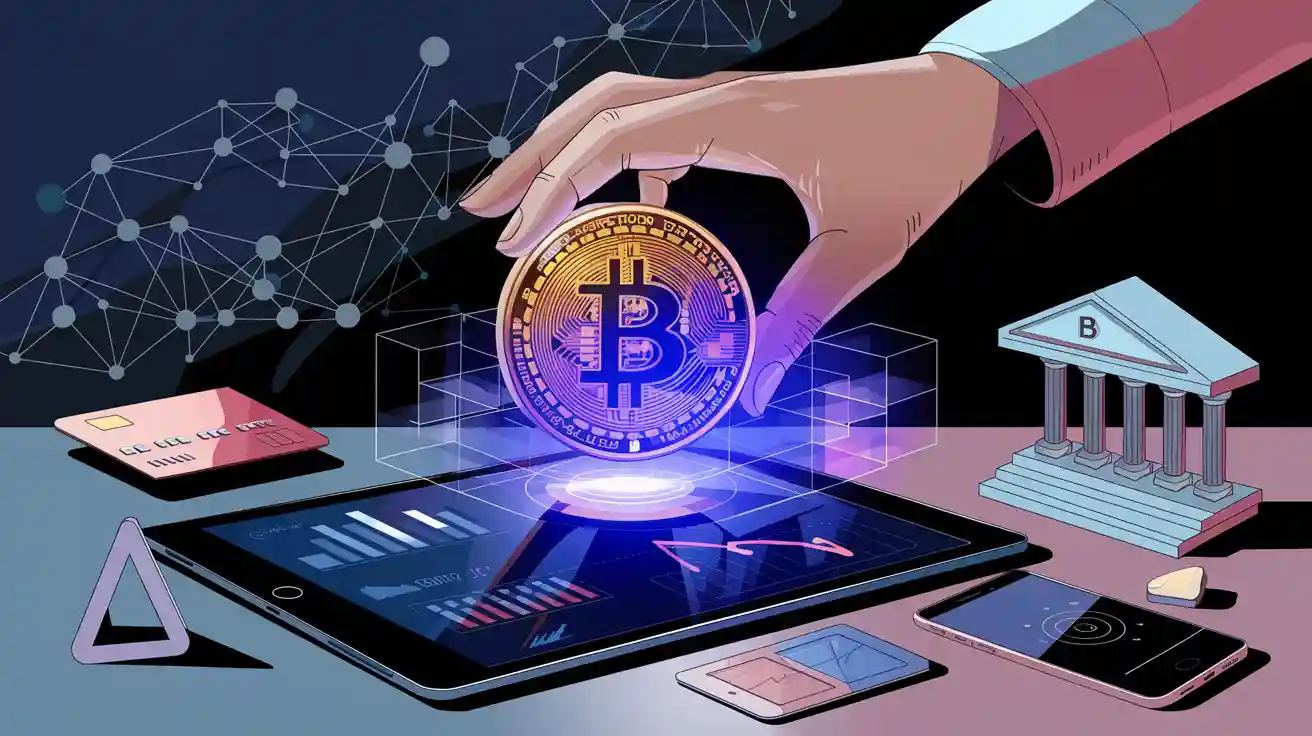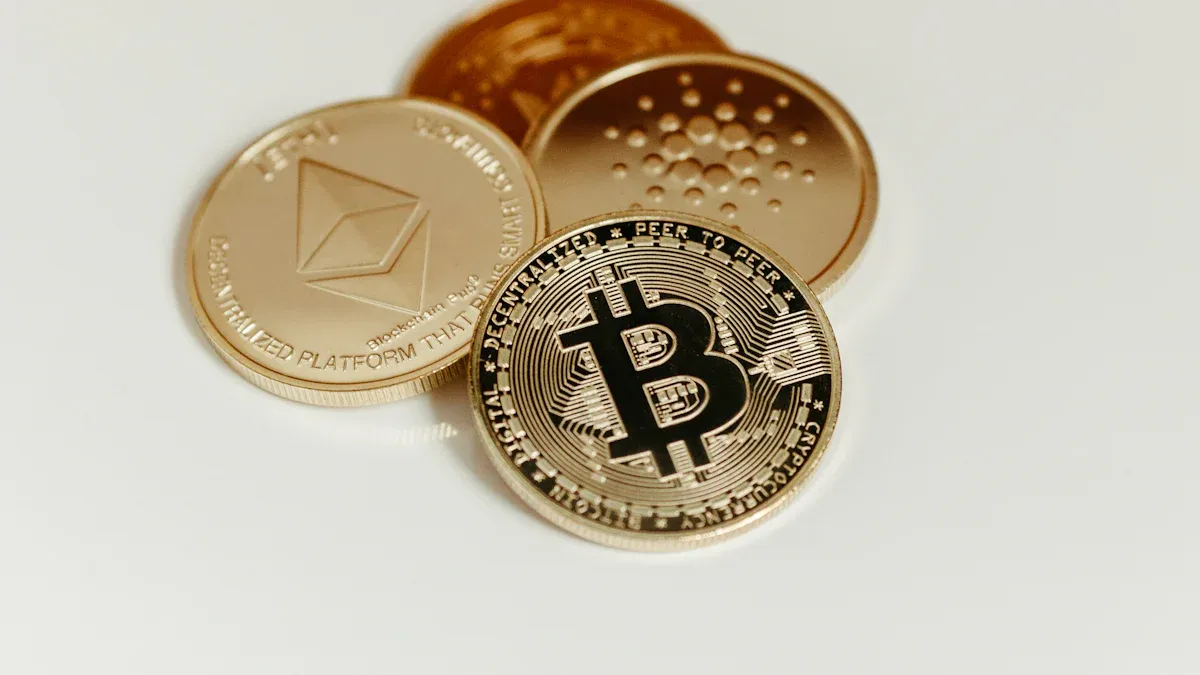What is the purpose of cryptocurrency and how it shapes modern finance
2025-06-16 06:27:06
Cryptocurrency serves as a digital currency designed for peer-to-peer payments and secure value storage. It operates without banks, using blockchain to ensure trust.
- Recent data shows strong crypto adoption among people aged 18-34, with high transaction volumes and growing interest in digital money.
Understanding what is the purpose of cryptocurrency helps users weigh both benefits and risks as crypto changes how people use money.
Key Takeaways
- Cryptocurrency enables fast, secure, and low-cost peer-to-peer payments without banks, using blockchain technology to ensure trust and transparency.
- Decentralization and cryptography protect cryptocurrencies from fraud and control, giving users more power over their money and offering new ways to store value like digital gold.
- Cryptocurrency improves financial inclusion by helping unbanked people access money services and challenges traditional banks, but users must manage risks and follow regulations carefully.
What is the Purpose of Cryptocurrency?

Digital Currency and Payments
Cryptocurrency was created to revolutionize how people transfer money. Unlike traditional banking systems, it enables peer-to-peer transactions without intermediaries. Bitcoin, the first cryptocurrency, emerged in 2009 during the Great Recession. Its launch marked the beginning of a decentralized financial system. Early milestones, such as the Genesis block and the first Bitcoin transaction, demonstrated the potential for direct value exchange.
Digital payments powered by cryptocurrencies are faster and more secure than conventional methods. Blockchain technology ensures transparency and prevents fraud. The growing adoption of digital wallets and mobile payment platforms highlights the shift toward cashless transactions. For example, over 3 billion people globally use digital payment systems, with projections showing this number will rise to 4.45 billion by 2029. Cryptocurrencies like Bitcoin and Ethereum are increasingly recognized as legitimate forms of money, challenging traditional banking roles.
Decentralization and Blockchain
Cryptocurrencies rely on blockchain technology to maintain decentralized networks. Blockchain acts as a distributed ledger, recording transactions across multiple nodes. This structure eliminates the need for central authorities, ensuring security and trust. Features like cryptographic techniques and consensus mechanisms protect data integrity and prevent unauthorized access.
Decentralization enhances reliability by removing single points of failure. For instance, consensus mechanisms verify transactions through majority agreement, ensuring authenticity. Blockchain's immutability ensures that recorded data cannot be altered, preserving transaction history. Transparency combined with privacy controls, such as zero-knowledge proofs, allows secure validation without exposing sensitive information. These innovations make cryptocurrencies a decentralized digital currency that empowers users with control over their finances.
Store of Value
Cryptocurrencies are increasingly viewed as a store of value, offering protection against inflation and economic fluctuations. Bitcoin, often referred to as "digital gold," exemplifies this role. Its fixed supply cap of 21 million coins ensures scarcity, making it a reliable asset for storing value. Institutional investors now account for over 68% of crypto trading volume, reflecting serious investment strategies.
While cryptocurrencies exhibit higher volatility than traditional assets, their risk-adjusted return profiles remain competitive. For example, Bitcoin's annualized return of 69% surpasses the S&P 500's 14%, despite greater volatility. Additionally, Bitcoin's low correlation with traditional assets makes it an effective portfolio diversifier. Retail and institutional investors alike embrace cryptocurrencies like Bitcoin and Ethereum as alternative assets for financial growth. This recognition solidifies their role as a legitimate form of money and a viable option for storing value.
How Cryptocurrencies Work
Peer-to-Peer Transactions
Cryptocurrency networks use a decentralized system where each user connects directly to others. This setup forms a peer-to-peer ledger, allowing people to send and receive crypto without banks. Nodes, or computers, in the network share information and verify transactions together. The Monero network, for example, shows that nodes can identify neighbors with up to 83% accuracy after three weeks, proving strong connections and reliability. Degree centrality measures how many direct links each node has, showing the network’s decentralized structure.
| Network | Neighbor Identification Precision (1 week) | Neighbor Identification Precision (3 weeks) |
|---|---|---|
| Monero P2P | 68-79% | 73-83% |
Peer-to-peer networks remove single points of failure. Each transaction gets recorded on the blockchain, making the process transparent and secure. This structure helps cryptocurrencies like bitcoin and ethereum operate smoothly, even as millions of transactions happen daily.
Security and Cryptography
Security stands at the core of how cryptocurrencies work. Blockchain technology uses cryptographic hash functions to create unique digital fingerprints for every transaction. These hashes link together, forming a chain that cannot be changed. Users create public-private key pairs to manage wallets and sign transactions. Digital signatures confirm the sender’s identity and prevent tampering.
- Cryptographic hash functions keep transaction data safe.
- Public-private key pairs protect wallet access.
- Digital signatures verify each transaction.
- Consensus methods like Proof of Stake and mining stop double spending.
- Advanced tools such as zero-knowledge proofs and homomorphic encryption add privacy.
Over 700,000 bitcoin transactions occur every day, showing the strength of these security methods. New algorithms like DynBlock pass strict tests for randomness and resistance to attacks, making crypto networks even safer.
Fast and Low-Cost Transfers
Cryptocurrency offers fast and affordable transfers compared to traditional banks. Many blockchains, such as Solana and BNB Chain, process hundreds or thousands of transactions per second. Settlement times range from seconds to minutes, while banks may take days for international payments.
| Network | Transactions Per Second (TPS) | Time to Finality |
|---|---|---|
| Solana | >1,000 | Seconds to minutes |
| Sui | 850 | Seconds to minutes |
| BNB Chain | 378 | Seconds to minutes |
| Polygon | 190 | Seconds to minutes |
| TON | 175 | Seconds to minutes |
| Traditional Banks | N/A | 1-3 business days |
Crypto transaction fees are usually just a few cents, while banks may charge $35 or more for a wire transfer. Bitcoin and ethereum networks handle payments quickly, and smaller cryptocurrencies can confirm transactions in less than a second. Blockchain technology removes intermediaries, making transfers cheaper and faster for everyone.
Cryptocurrency in Modern Finance

Financial Inclusion
Cryptocurrency opens financial doors for people who cannot use banks. About 1.4 billion people worldwide remain unbanked. Many face barriers such as strict ID rules, high fees, or no nearby bank branches. Cryptoassets and decentralized platforms allow anyone with a mobile phone to join the financial system. People can send and receive transactions, use peer-to-peer lending, and make real-time payments. Small businesses in emerging markets, like those in Nigeria and Argentina, use bitcoin or stablecoins to avoid high remittance fees and protect against inflation. In regions with low trust in government banks, cryptoassets give users more control over their money.
Disrupting Traditional Banking
Cryptoassets and cryptocurrency exchanges have changed how people manage money. Many now use cryptocurrency exchanges instead of banks for transactions and savings. This shift has led to new risks. In 2024, nearly 11,000 complaints about crypto ATM scams were reported, with losses close to $250 million. Some victims believed that cryptocurrency exchanges were safer than banks. State regulators now create new rules for cryptocurrency exchange operations and consumer protection. These changes show how cryptoassets challenge old banking systems and force new safety standards.
Benefits and Risks
Cryptoassets offer fast, secure transactions and new investment opportunity options. Blockchain technology makes data tampering very hard. Smart contracts lower risks between buyers and sellers. However, investing in cryptocurrency comes with high volatility. Bitcoin and ethereum can change value quickly, which increases risk. Advanced models help investors manage these risks, but losses can still happen. Regulatory compliance and strong security practices are important for safe use. While cryptoassets bring innovation, they also require careful risk management and clear rules for everyone.
Cryptocurrency changes how people use money by offering fast, low-cost payments and new ways to store value. Many financial institutions now use blockchain, with up to 80% lower transaction costs. As 94% of central banks explore digital currencies, the future of cryptocurrency brings both opportunities and challenges for global finance.
Table: Key Outcomes in Cryptocurrency Adoption
Outcome Data Point Transaction Cost Reduction Up to 80% Central Banks Exploring CBDCs 94% Visa USDC Transactions Over $3 billion
FAQ
What makes cryptocurrency different from regular money?
Cryptocurrency uses blockchain for security. It does not need banks. People can send money directly to each other. Digital wallets store crypto instead of cash.
Can someone lose all their cryptocurrency?
Yes. If a person loses their private key or gets hacked, they can lose all their crypto. Strong passwords and secure wallets help protect assets.
Is cryptocurrency legal everywhere?
No. Some countries allow crypto. Others ban or restrict it. People should check local laws before buying or using cryptocurrency.